Summary: This article is about “What is HDR” and reviews the top 5 choices of the best HDR software for Mac and Windows, read on and choose the best HDR photography processing for you.
Capturing pristine landscape images while retaining their grandeur is what many photographers hope to achieve. You can use HDR methods to overcome light balance issues and reproduce images with the same stunning accuracy that the eye sees. Having the right HDR software is essential if you want to get beautiful HDR images. However, if you don’t know how to choose from the many HDR software available, here we have reviewed the many HDR software available in the market and selected the best 5 HDR programs for Mac and Windows for your reference.
What is HDR Photography Processing?
When it comes to landscape photography, light balance is one of the most difficult challenges to overcome. Professional photographers take multiple shots of the same scene with varying shutter speed combinations to produce images with different brightness levels. Once done, they merged the images together to create a perfect image with the right balance of light and dark. This is called the HDR (High Dynamic Range) processing, and in the HDR image editor, it can provide an entire palette of colors that the human eye can see – something that most single exposures simply cannot do.
HDR refers to the range or distance between the brightest light and the darkest darkness. In photography, HDR will mean the amount of light and darkness that the camera can capture. Most modern cameras and smartphones have a built-in HDR feature that automatically adjusts the light as the image is captured. However, true HDR photography is a systematic process where you take multiple shots in “Auto Bracketing Mode” or “Auto Exposure Mode” and then process them through HDR photo editing software to merge the different files into a final HDR file, balance different exposure levels.
In order to make HDR work well, you need very specific software. The software you use to modify, edit, merge and manipulate these images is called HDR Photo Processing Editor, and it is available both as a standalone application and as a plug-in for other advanced photo editing software, such as Photoshop and Lightroom.
P.S – For a detailed tutorial on how to capture HDR photos, visit this post by Trey Ratcliff (co-creator of Aurora HDR) .
Best HDR Software for Mac and Windows: Our Unbiased Review of Top 5 Choice
When it comes to image-processing there are dozens of softwares out there, but we highly recommend the following top five HDR photo editors for both amateur and professional photographers. If you’ve got raw landscape images that you want to turn into stunning captures, we recommend running them through any of these HDR photo editors to recreate the magic and share them with the world.
1. Skylum Aurora HDR
The easiest and most useful HDR software for Mac and Windows, for beginners and experts alike.
If you’ve used Luminar, Skylum’s premium photo-editing app, you’ll easily get the hang of the Aurora HDR. Similar to Luminar, the Aurora HDR uses artificial intelligence to analyze images based on factors such as tone, lighting, color enhancement and many more. Once the analysis is done, the tool automatically makes adjustments on your images and reduces noise levels, improves light balance and turns dull images into flawless, spectacular captures within just a matter of seconds.
As soon as you upload a new image, the program begins by detecting scene type and automatically adjusts the images by improving color, tone, and other final touches to enhance image quality. If you’re not satisfied with the initial adjustment made by the app, you can choose from the Looks Collection given in the app. Aurora HDR 2019 comes with 8 looks out of which 5 are the usual looks that you get with Luminar too: Essentials, Landscape, Architecture, Dramatic and Artistic. The remaining 3 looks are given by HDR photographers Trey Ratcliff, Serge Ramelli, and Randy Van Duinen. You can also manually adjust each option using the controls given in the dashboard.
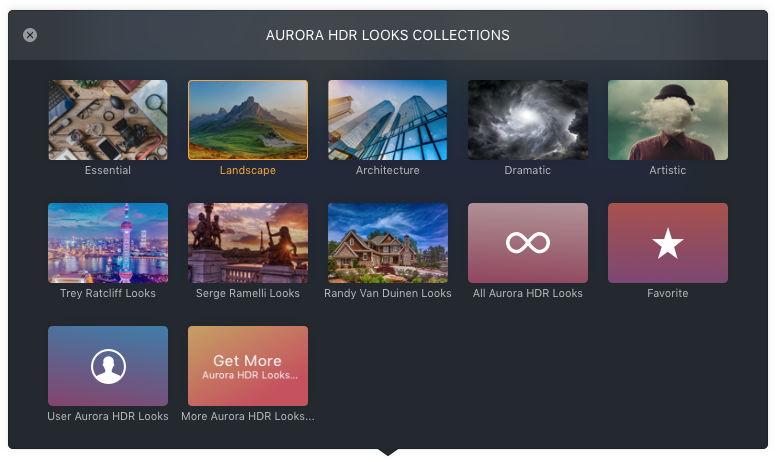
One of the best features we absolutely love in the Aurora HDR is the ability to create your own Aurora HDR looks. Using the controls given in the dashboard, you can create your own HDR look, that will be saved in the collection so the next time you simply have to reapply that look on other images. If you have problem on creating your own HDR looks, this Aurora HDR 2019 Getting Started Walkthrough video will help you.
Color adjustment and one-click look adjustments are just the basic things you can start with. With advanced options like masking, layer adjustments and the ability to add other plugins into the program you can apply distinct adjustments to different parts of your images. This works well for photographers who want to adjust only specific parts of the image such as applying a gradient on the sky, adjusting the look and feel of clouds etc. You also could read the review of Aurora HDR software, to learn more details about this best HDR software for professional photographers.
Bottom Line: The Aurora HDR may not be a full-fledged HDR photo editing software, but images processed with Aurora HDR have much less noise in the final result, and tonal blending is much improved. In addition, the reduction of ghosting is impressive, as is the effect of color de-artifacting and reduction of chromatic aberration. For $99 (a 10-day free trial is available), the Aurora HDR is the best HDR software available for Mac and Windows for photographers who specialize in landscape and scenic photography.
Rating – ★★★★
OS: Mac & Windows
Price: $89.00 (Original $99, $10 Off Code: MACLIBS )
Download – Skylum.com/AuroraHDR
2. Photomatix Pro 6
If you’re looking for a professional HDR photography processing software, the Photomatix Pro 6 is exactly what you need to merge, edit and adjust bracketed images into one single file. Although it is available as a standalone app for $99, it can also be used as a plugin for Lightroom.
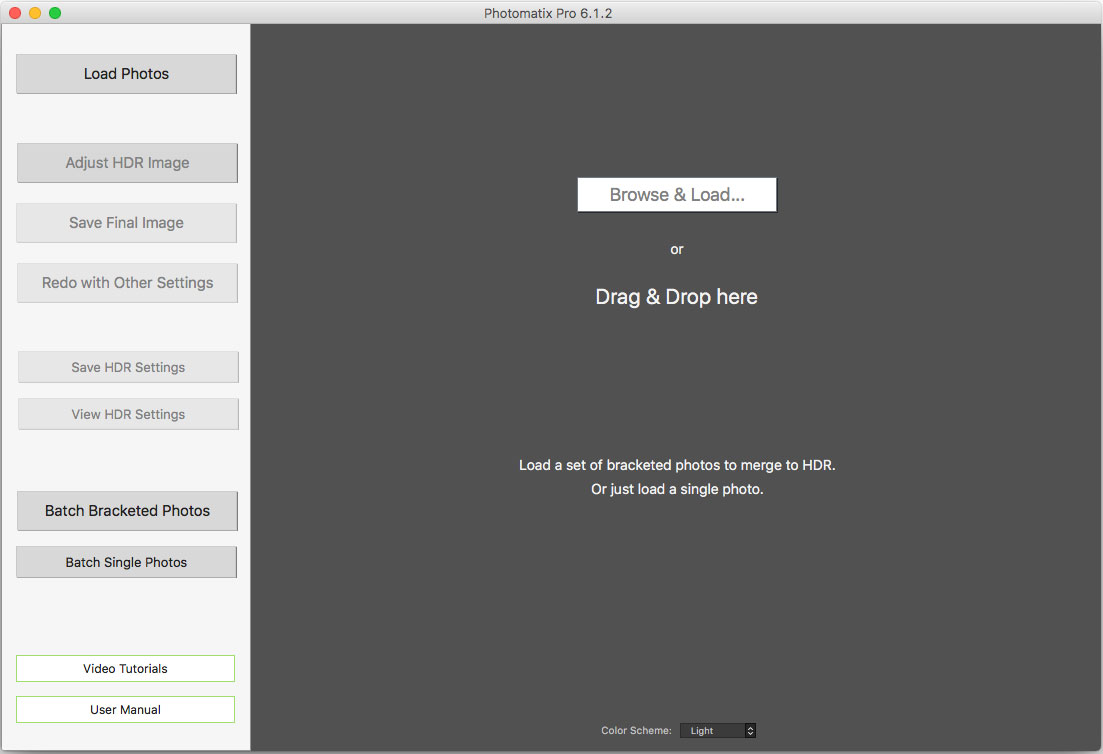
Professional HDR photographers use the Photomatix Pro 6 to edit and merge bracketed images (sequence of images of the same scene taken under different exposure settings) into a single file within a matter of seconds. Similar to other photo-editing apps, the Photomatix Pro 6 has 40-present styles to choose from which helps give you a unique touch to each of your photos. You can also adjust each style according to your own preference and save it as a personal preset for later use.
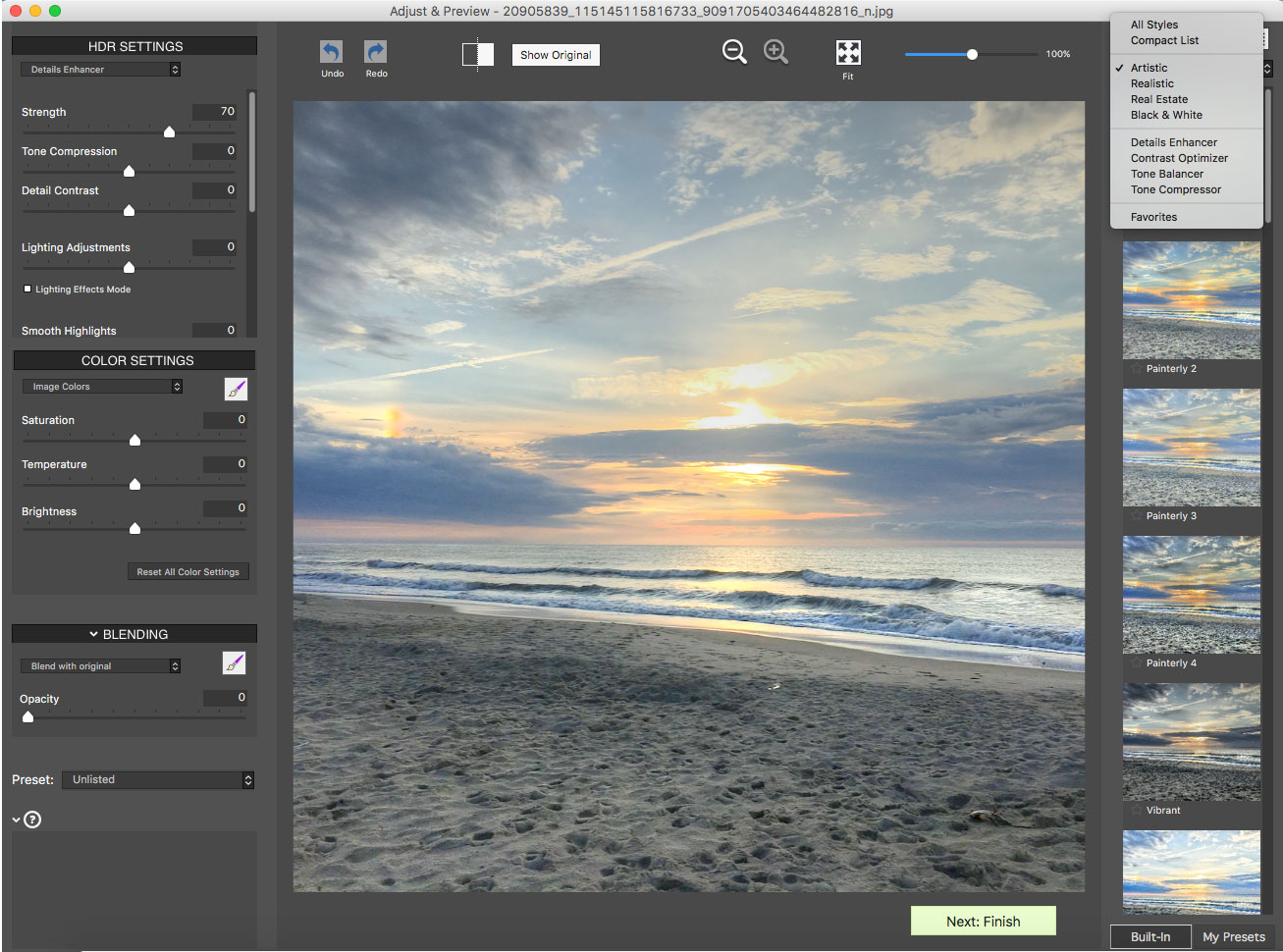
One feature that sets the Photomatix Pro 6 apart from the others is its powerful ghosting tool which lets you remove unwanted objects from your images with two options – selective or automatic deghosting. If you have a batch of images affected by moving objects such as people or vehicles passing by, you can use the deghosting option to remove those objects through a manual lasso selection of your desired ghosted area which you can replicate on images within that specific bracket.
Bottom Line: If you’re a professional landscape photographer looking for a tool that’s convenient to use and allows you basic controls of editing and merging bracketed image files, then the Photomatix Pro 6 is one of the best HDR software. Use it as a plugin in Lightroom to make your photo editing process easier and manageable.
Rating – ★★★★
OS: Mac & Windows
Price: $99.00
Download – Photomatix Pro 6
3. Adobe Lightroom CC
Like taking and editing pictures on the go? Adobe Lightroom is just what you need, however, at $9.99/month, you will need to think carefully over why you need the Adobe Lightroom CC when there are other one-time pay, cheaper HDR photo editing app options available.
The Lightroom Classic is a more mature software with essential photo controls that professional photographers rely on. The Lightroom CC is limited in functionality and focuses more on quick editing using your mobile app rather than the desktop app. Once pictures are edited they are automatically synced to the cloud so you can continue editing them using the desktop app. You get 1TB of storage with the Lightroom CC, but if you exceed 1TB, you’ll have to pay $20 for 2TB.
Although the Lightroom CC is meant for editing on the go, it comes with its own bundle of problems – you’ll have a hard time accessing images if your internet is bad, you’ll be limited in functionality, you’ll also end up paying more money if you cross the image storage threshold. The positive side is you have a clean interface, mobile+desktop friendly apps and a limited set of tools that you’ll need to get the most out of your picture.
The Lightroom Classic, on the other hand, has more advanced tools (which consumerist photographers may not need), minus the mobile app and cloud storage, so it’s really up to you if you want to choose between a Classic version that runs on the file system or the modern version that runs on the cloud system. Either way, both versions are powerful HDR photo editing tools that let you edit, enhance and improvise your images using presets and photo editing features like dehaze, healing, noise reduction tools etc.
Bottom Line: Adobe does intend to upgrade the Lightroom CC with some of the tools of the Classic version, however, for novice users, or general consumerist photographers who want to click, edit and upload images on their social media while on the go, the Lightroom CC is the best option.
Rating – ★★★
OS: Windows & Mac
Price: $9.99 a month
Download – Adobe.com or get from Amazon.com
4. EasyHDR
Easy HDR is a mid-range HDR photo editing software costing $39 for the home version and $65 for commercial use. Although EasyHDR is often lost under the hood of renowned HDR photo processing software like Aurora and Lightroom, it is actually quite popular with users who are looking for an affordable and easy-to-use HDR software. While it does not boast of functionalities and quality like other premium programs, EasyHDR does have most of the basic stuff a photographer would need to get the job done.
You’ll find modern features as lens distortion and chromatic aberration correction, free Lightroom plugin, live preview, batch processing and a whole lot of other features as provided by other expensive options. There are also several additional post-processing features that will let you use filters to smoothen, sharpen or reduce noise and color manipulation to fix shadows, highlights or middle tones.
Bottom Line: EasyHDR is one powerful tool that is designed to cater to the technicalities of HDR photo processing. You do need to have some technical information about HDR photography to use this program. It’s not as easy and simple as Aurora HDR, however, it’s more powerful and functional at one-third the cost.
Rating – ★★★
OS: Windows & Mac
Price: $39.00-$65.00
Download – EasyHDR software
5. Luminance HDR
Luminance HDR, formerly Qtpfsgui, is probably one of the oldest HDR photo editing app since 2010. Compared to modern HDR photography processing software, the Luminance HDR 2.6.0 is not as fancy or flexible, however, it does accomplish critical photo-editing and processing tasks for HDR photographs. But, as a free app, Luminance does do a great job especially since it has almost all of the important features you’d need for editing HDR images. Important photo-processing features as tone-mapping, white balance, level adjustments, image resizing, cropping, saturation and contrast factor settings can all be done easily using the program. Like other programs, you can upload batch images and merge multiple images together to create one HDR image.
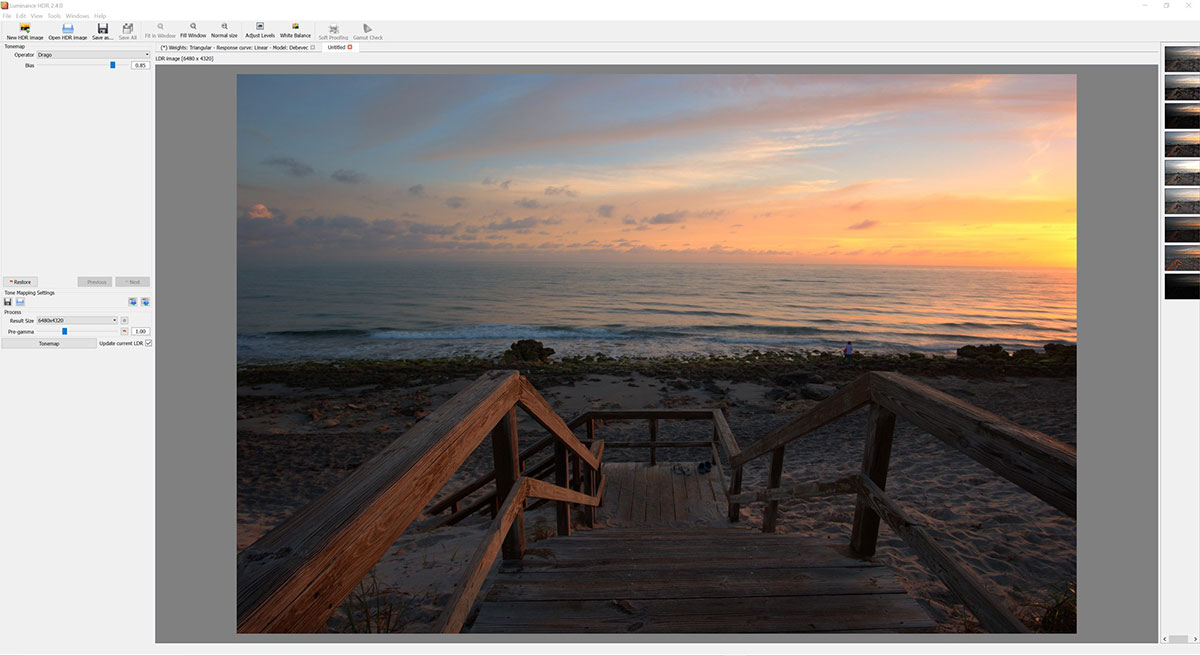
There is also a command-line interface available for users who prefer a non-GUI interface on all platforms. Luminance is actually an efficient program that is designed to do exactly what is required of an HDR photo editing software – nothing more, nothing less so if you’re looking for fancy stuff like layering, masking or auto-detection etc, you won’t be getting that in this software.
Bottom Line: For a free software, Luminance HDR is super efficient, easy to use and boasts of modern features like multiple tone operators, batch tone-mapping, fast export, and a few others. If you’re looking for a free software that can get the job done without all the fanfare, get the Luminance HDR. If you like the platform and appreciate it, you can also consider donating an amount.
Rating – ★★
OS: Windows & Mac
Price: Free
Download – Luminance HDR
Conclusion
With all modern phones having HDR capabilities, taking HDR images is no longer a difficult task. That said, if you want to get spectacular results, you’ll have to invest in a HDR photo editing software. If you’re a complete novice and just getting started with HDR photography, you should start with an easy-to-use software like Aurora HDR. If you live by taking photographs and editing on the go (psst, travel photographers, take hint!) , then Adobe Lightroom CC is your best bet.

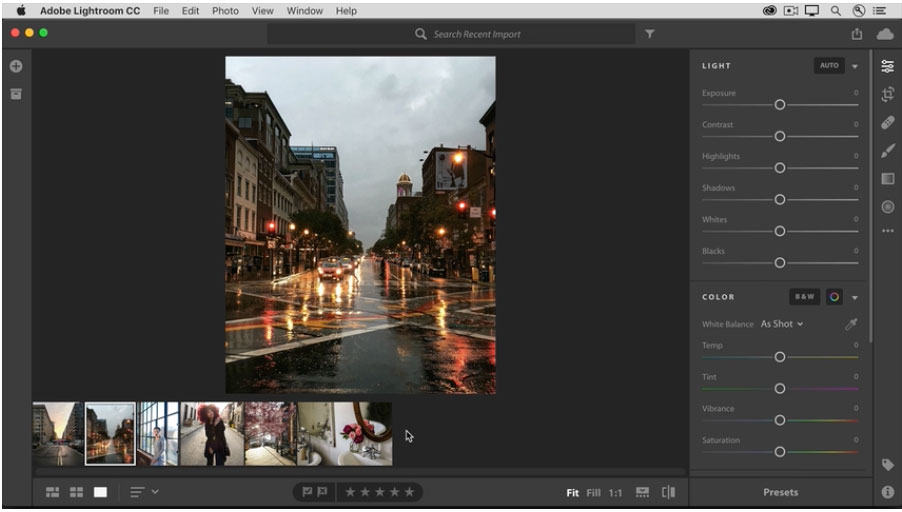
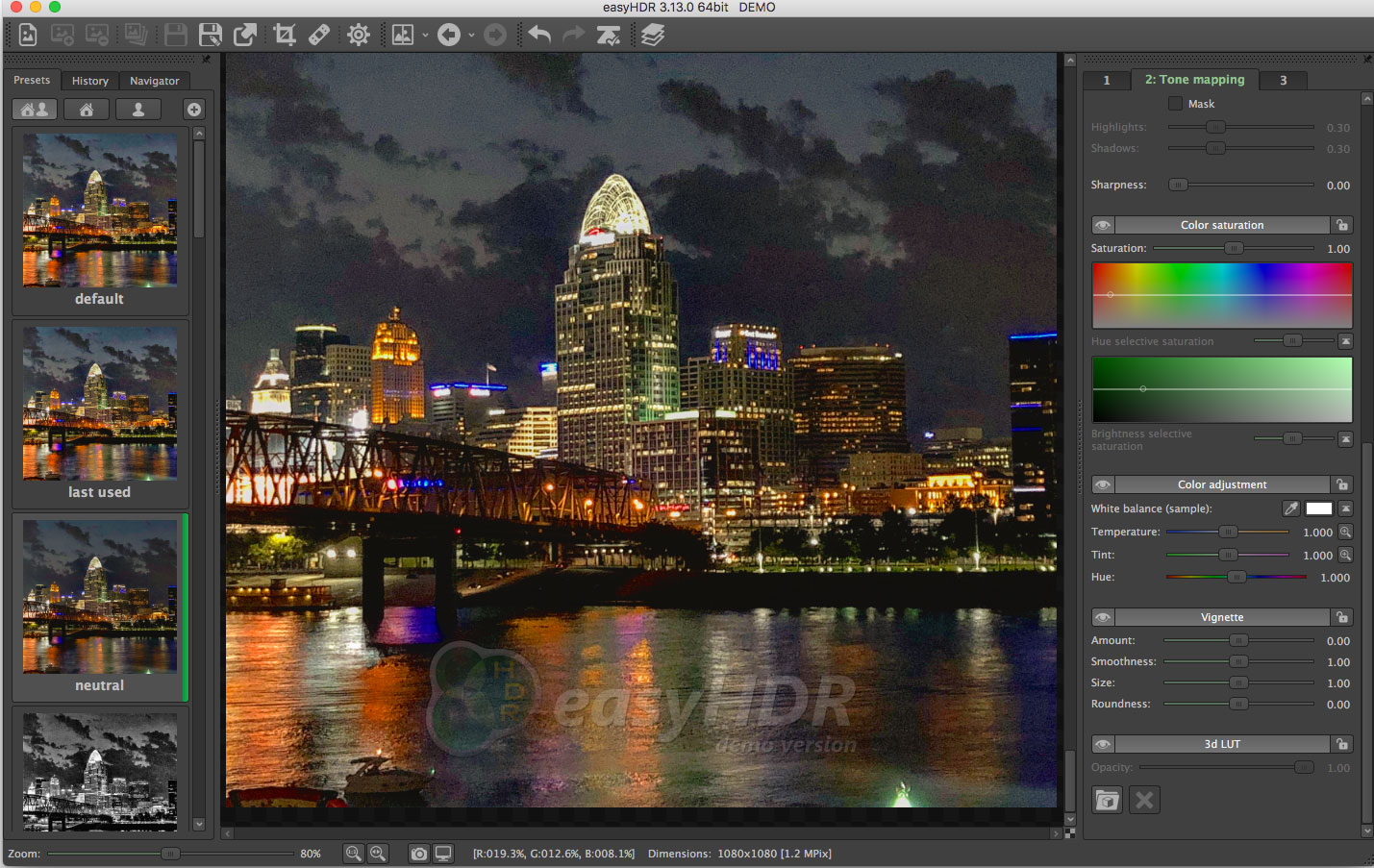
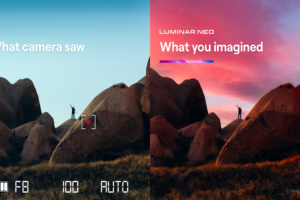



I would recommend Skylum Aurora HDR, I got a really nice deal on Aurora HDR with promo code applied, and am incredibly satisfied with the results. It even processes single images quite well.
Skylum Aurora HDR is the best HDR Photo editor for me, a beginning photographer, it’s very easy to use and get good results.
Real beautiful Article, I like Aurora HDR very much! Thanks for sharing!
Amazing, many of valuable knowledge! And I got Aurora HDR, cool!